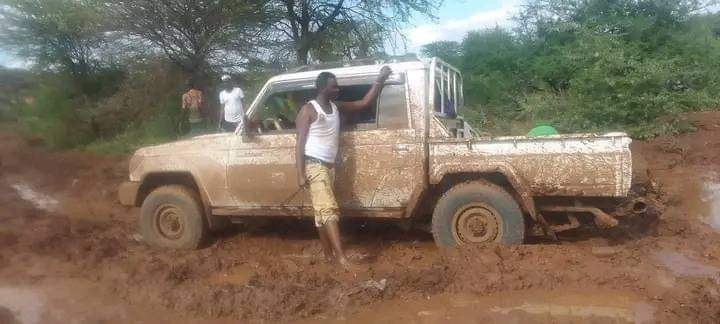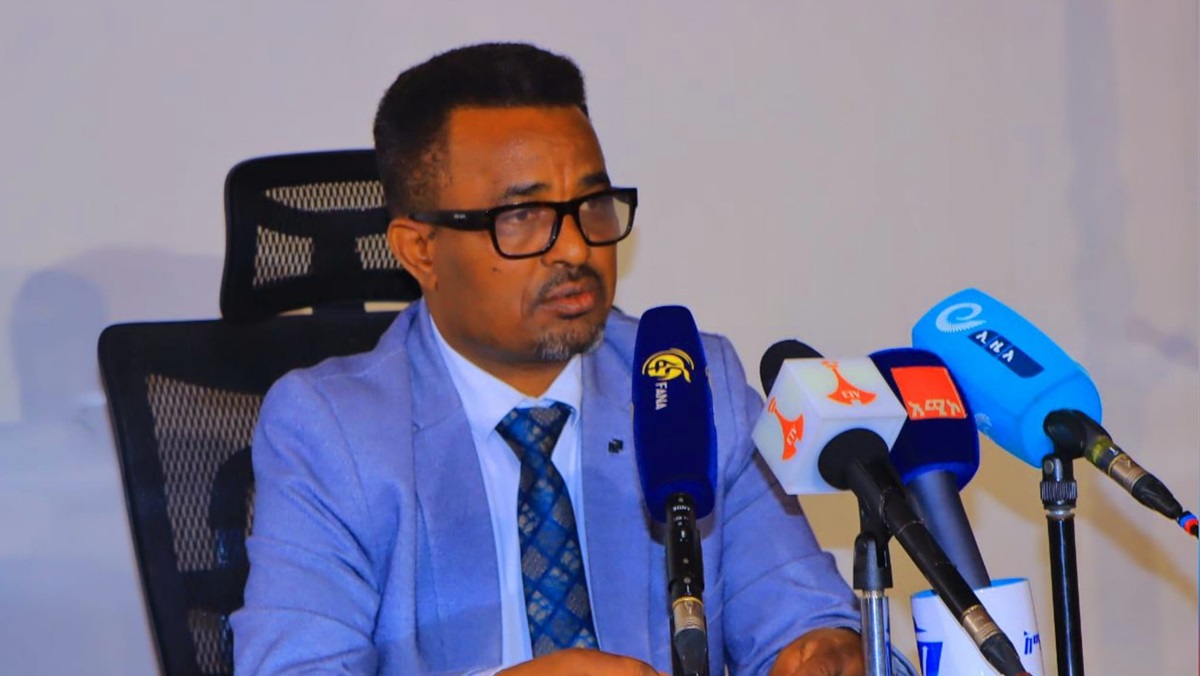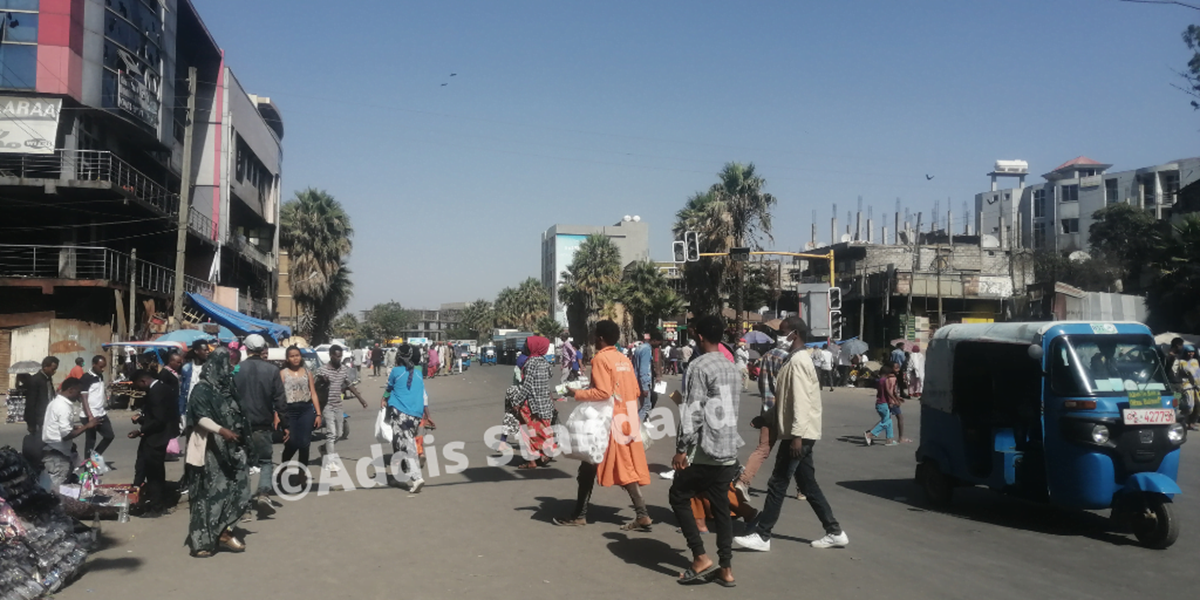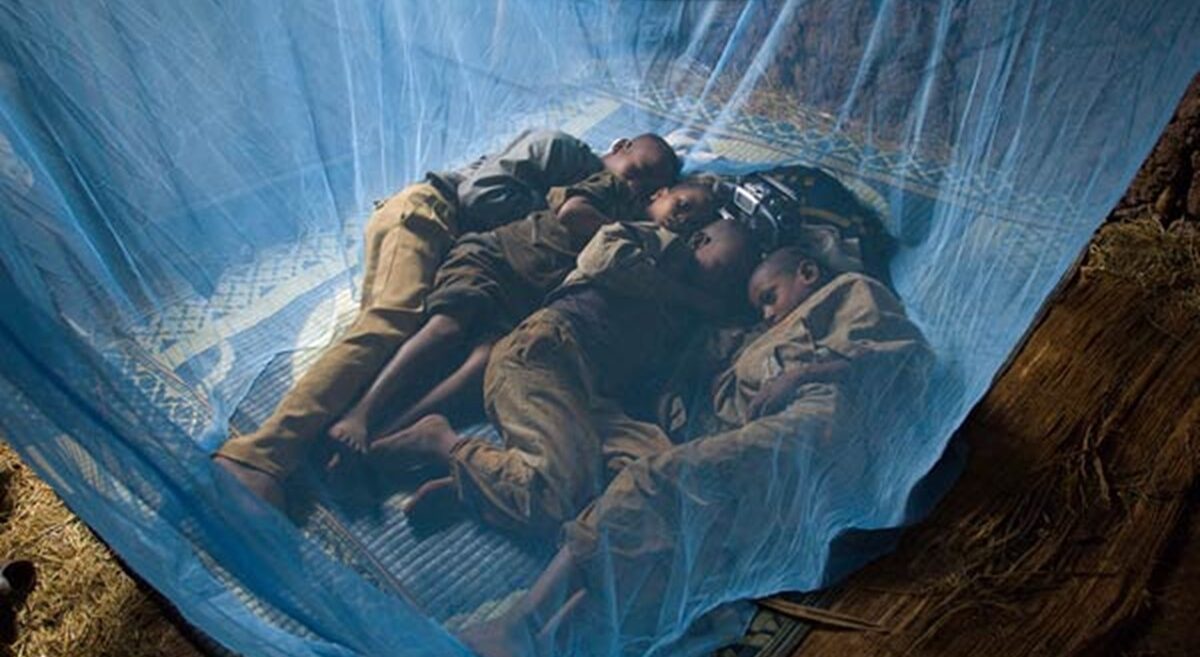In-depth: Flooding, Cholera ravage drought victims in Somali region, damaged roads disconnect vulnerable IDPs

By Medihane Ekubamichael @Medihane & Biruk Alemu @Birukalemu21
Addis Abeba/Moyale – Multilayered challenges test the limits of people in Somali, as predicaments of prolonged drought followed by sudden flooding that is accompanied by Cholera have become detrimental to the lives and livelihood of the mostly pastoralist community in Dawa zone of the Somali region, South-Eastern Ethiopia.
Rubbing salt to the wound, the disfunctioning rain sensitive roads are hindering the barely available aid from reaching those in earnest need.
The Drought
The prolonged drought in the horn region has been trembling Ethiopia year after year at various scales, mostly harming the pastoralist society who depend on the availability of water and food for their livestock.
The impact of drought stretches all the way to the Somali region, turning the rare vegetation into brownish leafless and lifeless woods through the scorching heat. The only hope that the people could salvage out of the dried wood is making charcoal, if they are able to collect whatever they can despite the merciless hunger.
Dawa zone of the Somali Region, one of the most severely hit areas has been bearing all the full-fledged damages of the drought without getting substantial immediate emergency response nor a considerable strategy to avert the calamities reached upon the lives and livelihood of people.
During a visit to El Gofa IDPs site in the zone, Addis Standard learned that a man who was sheltered at the site, and walked into the woods empty bellied fell on the ground knocked by hunger.
The IDPs in El Gofa couldn’t even get the charcoal they made from the dried woods to the market, because their camels and donkeys which they used for transporting goods were perished into the reddish sandy soil of the drought hit landscapes of the Dawa zone.
“I had around 150 camels, 50 cattle, and 300 goats that I depend on to support my family. Now I have completely lost them to the drought over the four years.”
Yusuf said, drought victim
What is alarming and troubling is the almost complete absence of aid provision efforts that are often seen in adjacent Borena zone of the Oromia regional state, where aid carrying trucks show off their load in Yabelo town roundabout and vicinity kebeles placing posters below their windshields portraying the identity of the sending initiatives or a national, regional and city institutions including the Ethiotelecom and the Addis Abeba City Administration.
Although whatever is done in Borena is still so small compared to the vastness of the drought impact seen on the ground, not even a small portion of aid that is arriving in Borena was noticed to march to the needy in the Dawa zone throughout four days stay of Addis Standard’s reporters in the most drought hit areas.

The coming forward of woreda and zonal officials to declare the situation “beyond their capacity” while pleading for due attention from the regional and federal governments by itself revokes a serious question as to why emergency response delays while even people continue dying of hunger and malnutrition. Ironically, aid from community initiatives from the bordering county/region of neighboring Kenya has for the second time taken over the locally expected emergency response.
Yusuf Edo is one of about 53,000 people displaced to the El Gofa IDP center in Moyale woreda along with his family. Yusuf has been a pastoralist who mostly used to reside in an area called Dukutu before he came to the El Gofa IDP center after losing his cattle and camels to the prolonged drought. Yusuf told Addis Standard that he looks after his family of more than thirty people including his daughters and grandchildren who are in a dire situation due to lack of food and shelter.
“I had around 150 camels, 50 cattle, and 300 goats that I depend on to support my family. Now I have completely lost them to the drought over the four years.” Yusuf said, adding that they came to the center hoping to get food, water and shelter because he has nothing to feed his family now.
“Look at how degraded my physical condition has gotten afterwards, due to the lack of anything to eat and drink,” said Yusuf in despair pleading for immediate attention.
An elderly, Mahmud Mohamed, now staying in Harbore IDP center, came from areas called Raro and Kojwa after losing all his 80 cattle and 25 camels. He said he gets very little aid every 20 days, but not sufficient to sustain life through.
“Now all of us are here in the center, many have gone to the nearby Moyale town to sustain their lives because what we get is not sufficient at all,” Mahmud said.
The Flood
The scorching heat and dry environment in the drought ravaged areas suddenly turned into a mess show of flooding from the continuously advancing autumn rain that came in March after five consecutive years of absence at this scale.
Flood that already hit four woredas of Dawa zone between March 20 – 25 has affected more than 4653 households or about 28,000 people and forced half of them to be displaced from their home or temporary settlements, while the death toll has reached 8 with the latest updates from the four woredas.
“Due to the flood, now it is impossible to disseminate food aid from the WFP hub in Gode to East Imey and other connected woredas”
Bashir Arab, Early warning coordinator at Somali region Disaster and Risk Management Bureau
The lack of well paved and layered road that Addis Standard observed during recent visits to the area, has easily become a hindrance to aid supply in the region. Residents in Moyale woreda confirmed to Addis Standard that the roads to various woredas have become a mess.
“Roads are only dared to go by motor bikes if not by foot. Even motor bikes are driven only on foot paved tracks,” said a resident from Moyale woreda.

Abdireshid Ibrahim Aden, Dawa zone Disaster Risk Management(DRM) coordinator told Addis Standard that aid from the federal government has lately reached Hudet and Moyale woredas, but couldn’t reach the Kededuma and Mubarak woredas due to degraded condition of the road, that now turned into confusion of muddy landscape, hindering the logistic operations.
According to Bashir Arab, early warning coordinator at the regional Disaster and Risk Management Bureau, detriments of the flood that was caused by overflowing of rivers or rush of flush flooding have wildly affected the Dawa, Afder, Shebelle and some areas of Erer zones hindering movement of vehicles at regional level.
He said overflooding of the Shebelle river has caused damage in many districts mainly disconnecting the road from Gode to East Imey and West Imey of the Afder Zone, forcing the only way from Gode to Imey to be a very long way through Jigjiga.
“Due to the flood, now it is impossible to disseminate food aid from the WFP hub in Gode to East Imey and other connected woredas,” said Bashir.
Additionally, he said that the flood from the Shebelle river has especially annexed seven kebeles in Mustahil woreda and six kebeles in Kelafo woreda of the Shebelle zone making them inaccessible by road. “It is unthinkable to reach the people in these kebeles without a helicopter or boat,” he said.
“The casualty recorded so far has reached 34 people, including those who were killed from vehicles that drowned in the flood”
Bashir Arab, Early warning coordinator at Somali region Disaster and Risk Management Bureau
Similarly, in Dawa zone, Moyale to Mubarak, and Moyale to Kededuma is inaccessible, with Moyale to Hudet having a slight access. The rain, according to the Meteorology Agency, is expected to continue for sometime, making the road system more complicated. In Erer zone, the difficult terrain road from Fiq to Meyu Muluko, is expected to cease function under any further precipitation.
Bashir, also indicated the occurrence of casualties when vehicles are drowned and taken by running flood even when they dare to cross through the flood. He underlined that the poor development of roads in the region has been attributed to exacerbated impact of the flooding and issues of inaccessibility to areas with people with emergency need.
The scale of the inaccessibility is now identified to determine areas that need further assistance and reach by helicopters and boats from the defense, said Bashir.
“From the information we collected so far 90 percent of the region has gained from showers to heavy rain that caused flooding. Gheledi and Boff woredas of Dolo zone near the Ethiopia-Somalia border are the only areas that were reported to see no drop of rain so far,” he said.
According to Bashir, generally 23 woredas are affected by the flood in the region, comprising 140 kebeles in Dawa, Afder, Liben and Shebelle zones, affecting 45,0109 households, out of which 26,803 households or over 160 thousand people are displaced as the result of the impact of the flood. The casualty recorded so far has reached 34 people, including those who were killed from vehicles that drowned in the flood.
Additionally, 16,983 livestock are killed by the flood, whereas, 24,053 hectares of crops around rivers are destroyed. The flood has also incurred structural damages to 3 health posts, 1 health center, 53 schools, several water developments, 749 houses, 235 toilets, 10 farmer training centers and 314 water pumps are destroyed. In connection to this around 8100 students, all from Shebele zone are left out of schooling due to the flood.
Bashir further said, information exchange is being undertaken to determine the assistance needs, however, as per the damaged roads, they are expecting the national cluster for logistics and access to address the damage along with the regional road development authority.
The Cholera
A fatal Cholera outbreak that surfaced since early March in Moyale town, through cross border transmission from neighboring Kenya, has now spread to nearby Lehey.
Although there are ongoing efforts to control the outbreak at Cholera Treatment Centers (CTC) and Cholera Treatment Units (CTU) established at health centers including the hospital in Lehey, zonal DRM coordinator Abdireshid said the cholera cases are increasing day by day.
Beshir also noted that despite reports of new cholera cases, deaths, recovery and discharges that vary at different times, the outbreak is quickly spreading. He expects a consolidated report in the days to come.
Addis Standard’s several attempts to reach the zonal health bureau head, Hassan Abdi, for comments on the situation of the cholera outbreak and the efforts by the health bureau to control and avert the elevated consequences, did not bear fruits. AS








